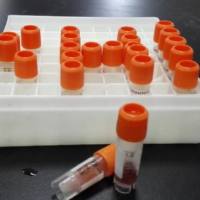Chromosome Microdissection for Detection of Subchromosomal Alterations by FISH
互联网
593
Chromosome microdissection is a recently developed molecular cytogenetic technique that has become increasingly important as a bridge connecting cytogenetics to molecular genetics. After a decade of effort, this approach has been developed into a useful and reproducible approach for several purposes, including 1 ) the isolation of DNA from any cytogenetically recognizable region which can be used to generate DNA microclone libraries for molecular analysis and positional cloning (1 ,2 ) the generation of fluorescence in situ hybridization (FISH) probes for whole chromosome painting probes (3 ), and chromosome arm painting probes (4 ) for cytogenetic study; 3) combined with FISH, microdissection has been applied to detecte virtually any kind of visible chromosome rearrangements (5 ,6 ); and more recently, 4) microdissection combined with hybrid selection has been applied to identify genes associated with homogeneously staining regions (HSRs) in human cancers (7 ,8 ).








